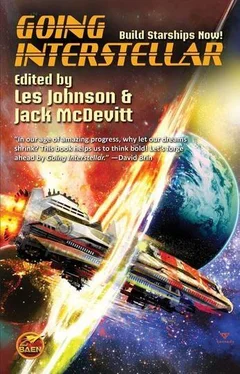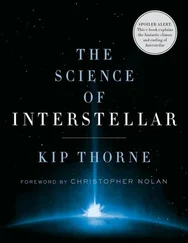But this presents us with a cosmological mystery. According to the Big Bang Theory, which is well supported by observational evidence, all of the matter, energy and space/time in our universe originated from a fluctuation in the universal vacuum that somehow became stabilized approximately 13.7 billion years ago.
In this early universe, things were very compact and very hot. Three of the four universal forces—electromagnetic, nuclear strong and nuclear weak—were united in one “super force.” Instead of nucleons, atoms, stars and planets, the early universe’s matter was a soup of tremendously energetic subatomic particles called quarks and gluons.
As things cooled and inflated, the universe went through a number of phase changes. At some point, nucleons such as protons, deuterons and alpha particles were created.
Here is the rub. As these primeval nucleons were created out of the energetic stew of pre-nuclear matter, standard, well-established nuclear physics predicts an exactly equal number of nucleons and anti-nucleons. Many or all of these particles and anti-particles should have been converted into gamma rays as they annihilated each other. In fact, the universe should be absolutely empty as a result of these matter/antimatter annihilation events!
Clearly, this is not the case. Matter exists, but what became of the antimatter? Did the early universe divide during its inflationary phase into a matter-half and an antimatter-half? If so, then why don’t we detect annihilation gamma rays from regions where these two sub-universes come into contact?
The giant black holes that became luminous, quasi-stellar objects and now reside quietly at the centers of spiral galaxies (such as our Milky Way) also evolved in the early universe. Some suggest that in some unknown fashion, a bit more of the universe’s early antimatter fell into these cosmic maws than did normal matter. But no one can suggest a mechanism. If this hypothesis turns out to be correct, though, there are some interesting science-fiction concepts. How might we travel to the huge black holes? And how might we get the antimatter out of them?
Another possibility is that there is a slight asymmetry in the production scheme for matter and antimatter. This scheme might slightly favor the production of normal matter. Experimental evidence for such an asymmetry is sparse. One reason for the development and construction of the Large Hadron Collider at the CERN is to search for such asymmetries. But even this enormous and energetic proton accelerator may not have sufficient energy to duplicate conditions in the very early universe.
The Antimatter-Matter Interaction
It was originally believed that the interaction of a particle and its antiparticle twin would instantaneously result in gamma ray photons. This would not be great for space travel since gamma rays are not easy to deflect. But nature is actually a bit kinder to us in this respect. Yes, gamma rays are the end product. But along the way, many of the intermediate, short-lived particles are electrically charged.
Early antimatter rocket pioneers had no idea regarding the charged-particle decay scheme for matter-antimatter annihilation products. In the early 1950s, the German rocket scientist Eugen Sanger proposed that a spacecraft propelled by the matter-antimatter reaction would be a photon rocket emitting gamma rays. But focusing these gamma rays so that they emerged as an exhaust seemed to be a nearly insurmountable problem. Sanger’s thought experiments centered upon an electron gas that might reflect the gamma rays. But he was never able to solve the problem.
It was a flamboyant and dynamic American physicist and science fiction author, Robert Forward, who brought the charged-particle decay scheme of the proton-antiproton annihilation reaction to the attention of the space propulsion community. An imposing figure, Forward was famous for his colorful vests. Legend has it that he never wore any of his vests more than once!
In 1983, Forward conducted a research effort on alternative propulsion techniques. This was published in a December 1983 report for the United States Air Force Rocket Propulsion Laboratory. According to this report, the immediate products of proton-antiproton annihilation are between three and seven electrically neutral and charged pions. (A pion is one of the many subatomic particles found to comprise the matter around us.)
A magnetic nozzle can be used to focus these electrically charged particles and expel them out the rear of a matter/antimatter rocket as exhaust. A large fraction of the energy produced in the proton/antiproton annihilation is transferred to the kinetic energy of this charged particle exhaust. Although an operational matter/antimatter annihilation rocket will not have the one hundred percent efficiency of Sanger’s photon rocket (probably thirty to fifty percent according to Forward), it will be much more effective than a fission or fusion rocket. And charged particles, even short-lived charged particles, are much easier to handle than gamma rays.
Antimatter Factories
To date, no repositories of antiprotons or anti-hydrogen have been found. But antimatter is routinely produced in nature and also by humans. In this section, we deal with various types of antimatter factories.
First, let’s consider nature’s factories. Then, we will look at antimatter production in our largest existing nuclear accelerators. Finally, we treat antimatter production facilities that might be constructed by a future solar-system wide civilization.
Natural Antimatter Factories
It has been suggested that one source of antiparticles in nature is black holes. The process would work as follows. Protons have a higher mobility than electrons. In the case of a black hole immersed in a tenuous neutral plasma composed of electrons and protons, more protons than electrons might tend to disappear into the event horizon of a cosmic black hole. This would produce a positive charge on the black hole and a large electric field. If the field becomes enormous, a vacuum instability could be produced. This vacuum instability might result in the production of matter/antimatter pairs. It is conceivable that in the early universe, the preferential gathering of protons into black holes and the resulting positive charge on these singularities might have resulted in more negatively-charged antiprotons being absorbed by them than positively-charged protons (since opposite charges attract). But what then happened to the surplus positrons?
Another way that matter/antimatter pairs can theoretically be produced by black holes is Hawking Radiation, named after the world-famous British theoretical physicist. Black holes of all sizes may have been created in an early stage of the universe. As black holes age, they ultimately evaporate with the less massive ones suffering this fate sooner that their more massive compatriots. Primordial black holes of asteroid-planet mass are theoretically evaporating during the current universal epoch. As a black hole evaporates, much of its contained energy is radiated away. Some of this radiation should be converted to matter/antimatter pairs.
Closer to home, it has been noted that even stable, main-sequence stars like our Sun may be antimatter factories. In 2002, satellite observations of solar flares indicated that a large flare may release as much as half a kilogram of antimatter. Apparently, solar flares in some unknown manner sort particles by mass so that many of the antiparticles unexpectedly survive their passage through dense solar layers.
Even closer to home and more surprising are satellite observations of terrestrial lightning discharges. In 2009, it was reported that during its first fourteen months of operation, the NASA Fermi Gamma Ray Space Telescope had detected gamma ray bursts associated with seventeen lightning discharges. The positrons were detected in two of these.
Читать дальше












